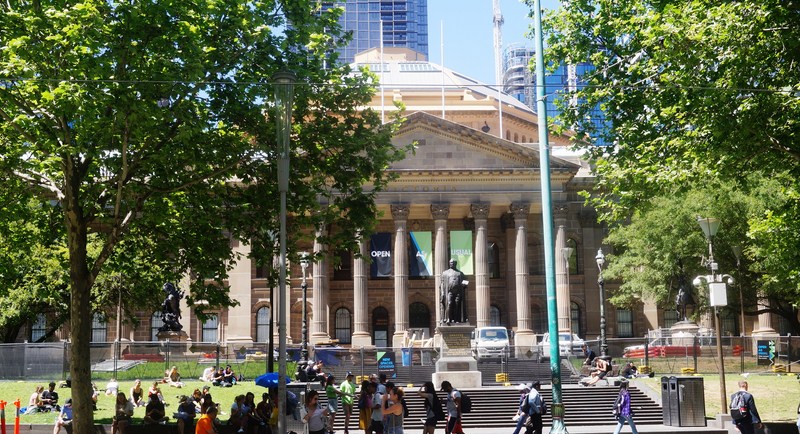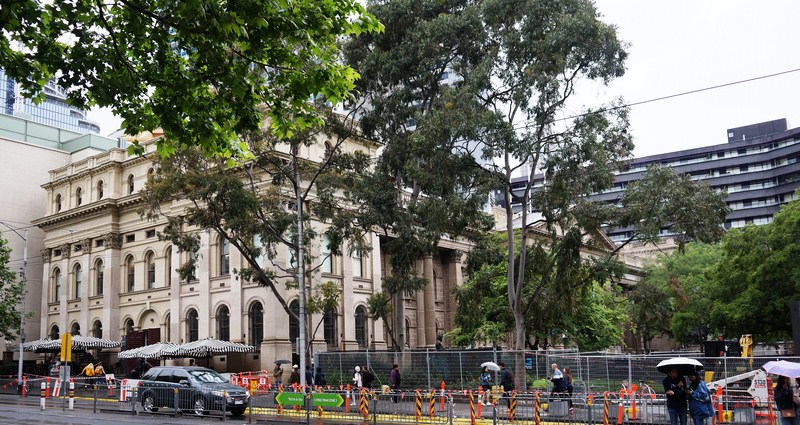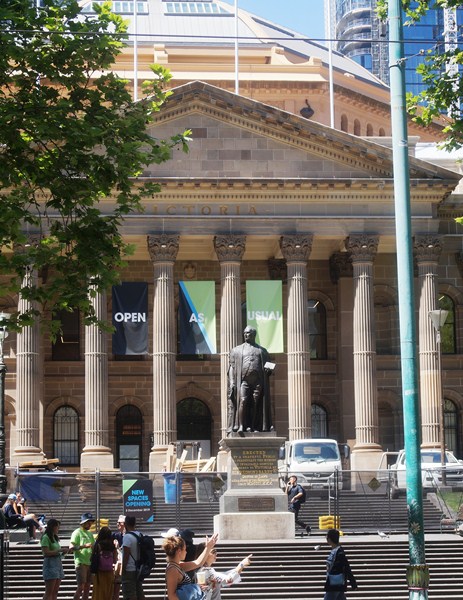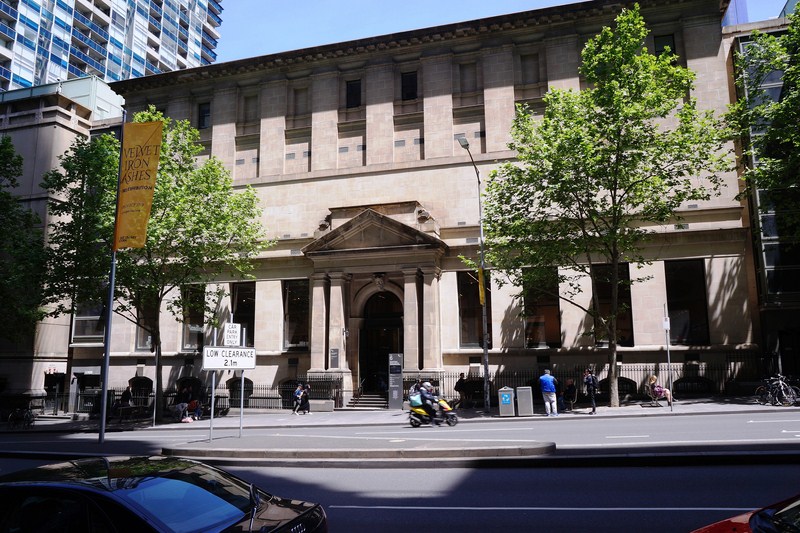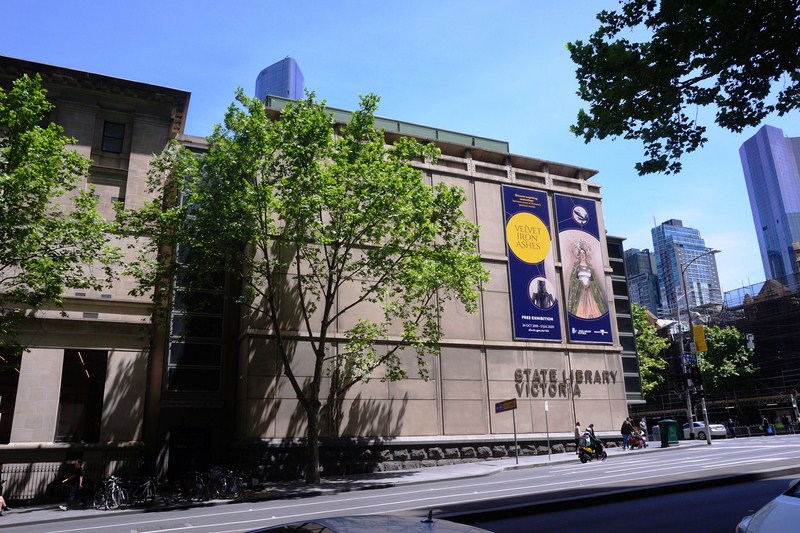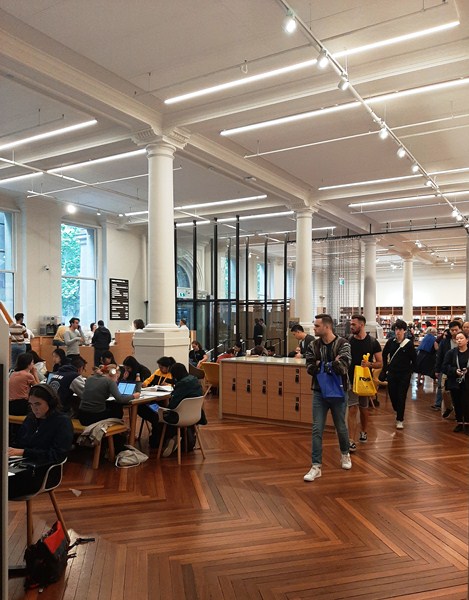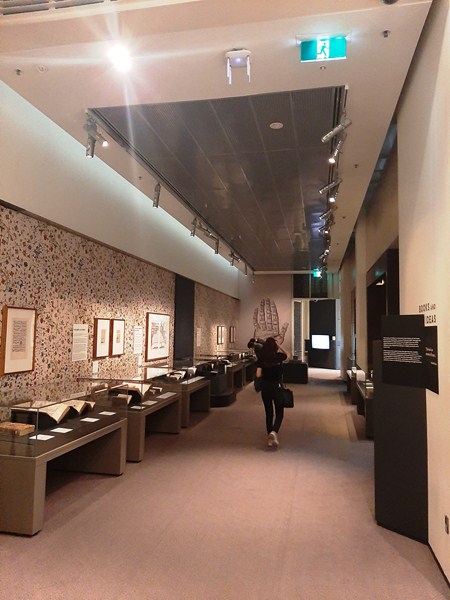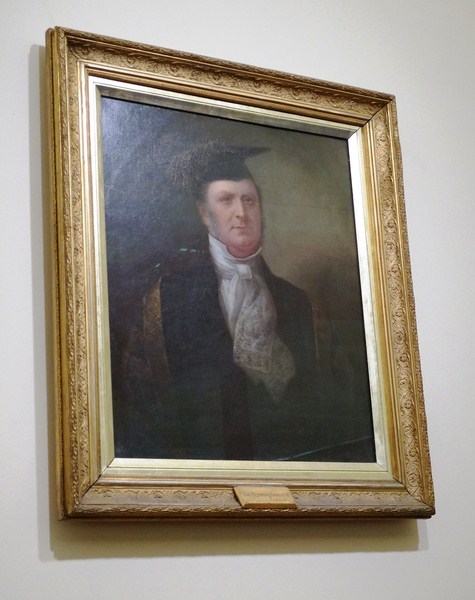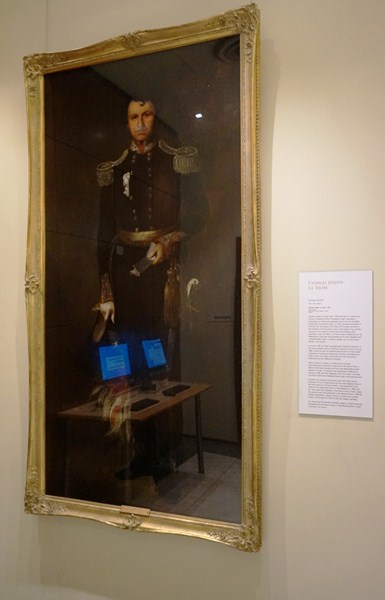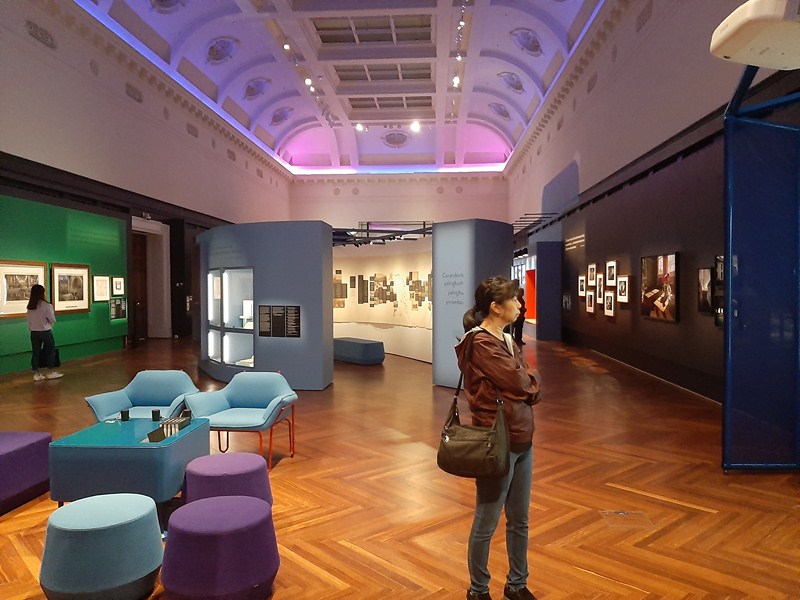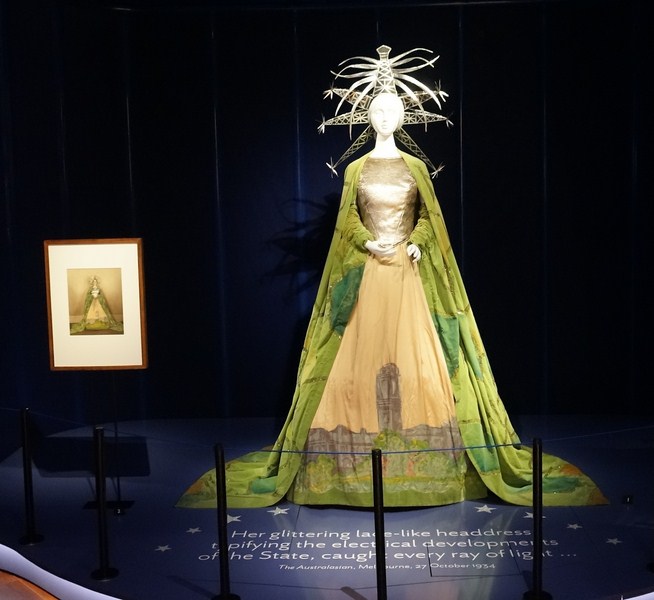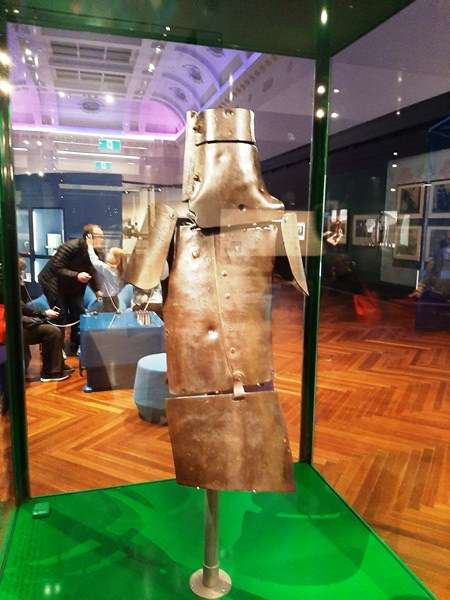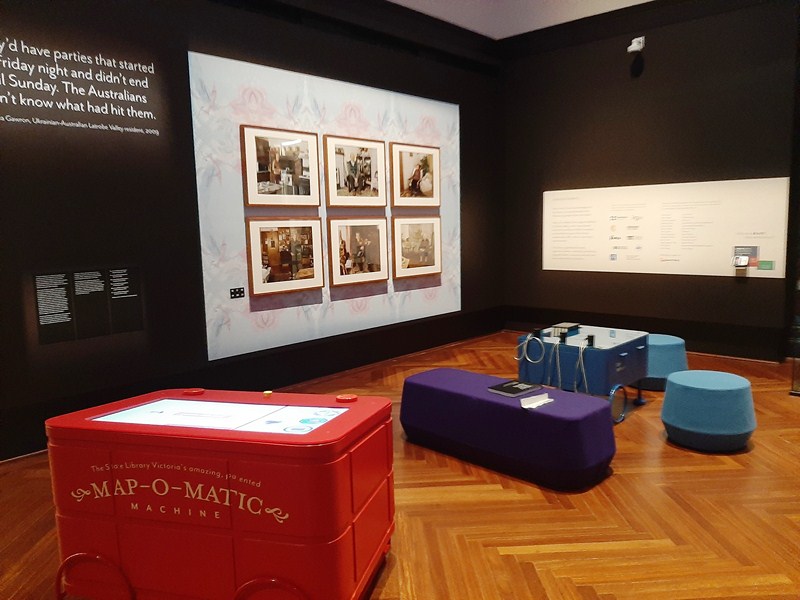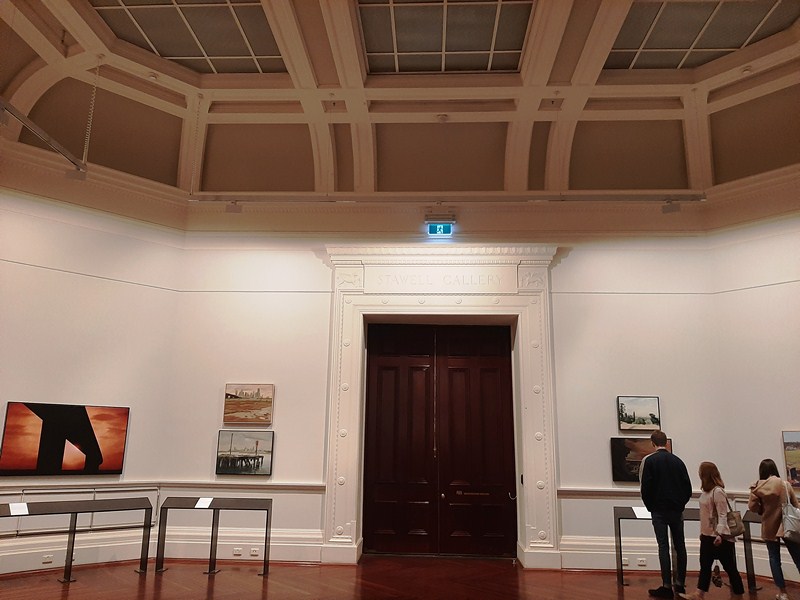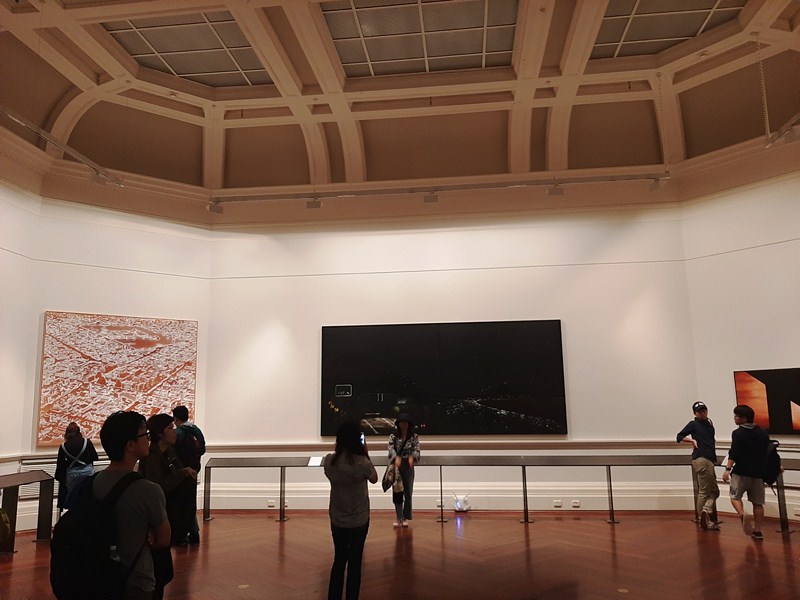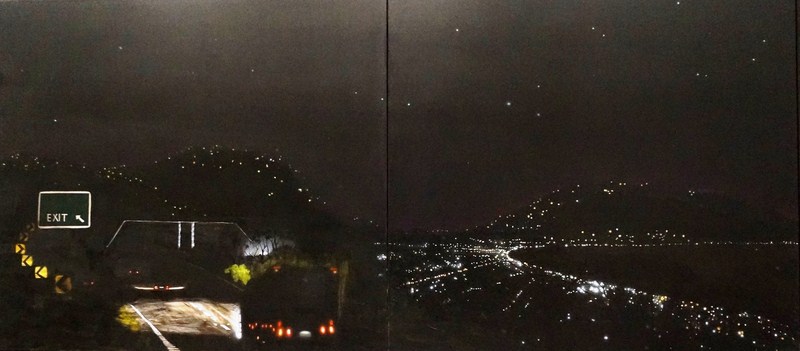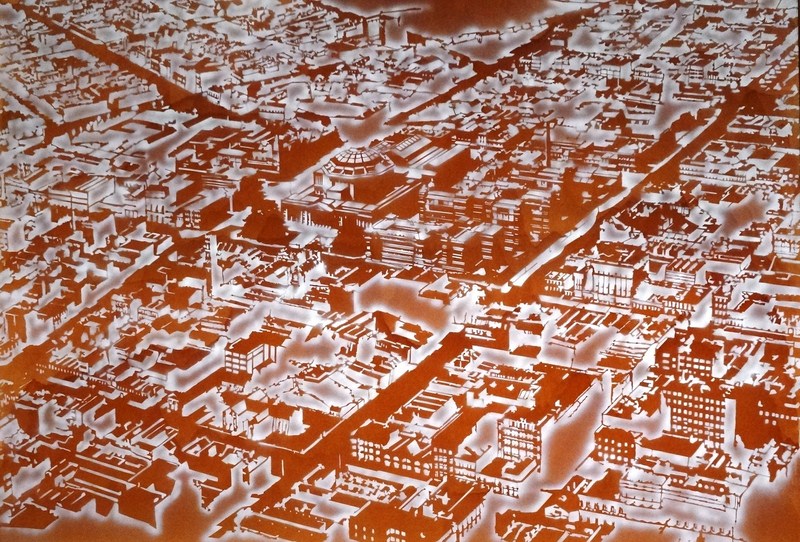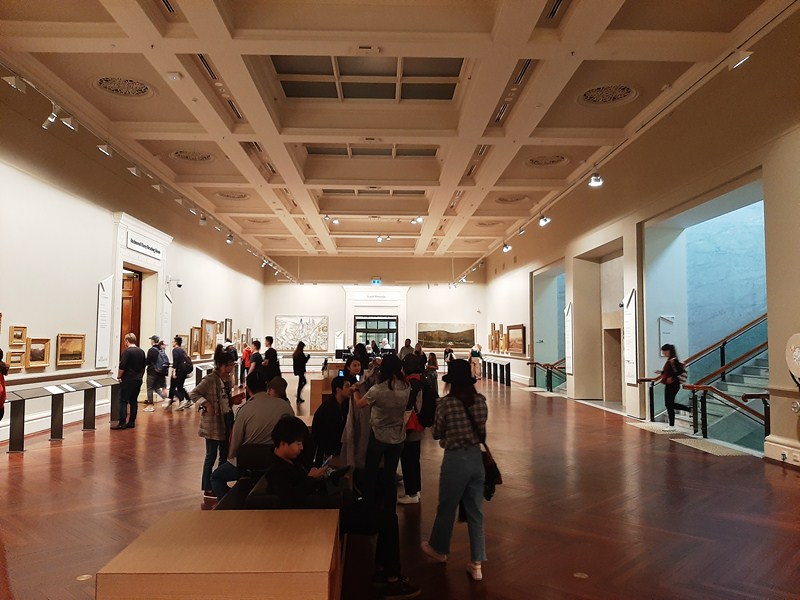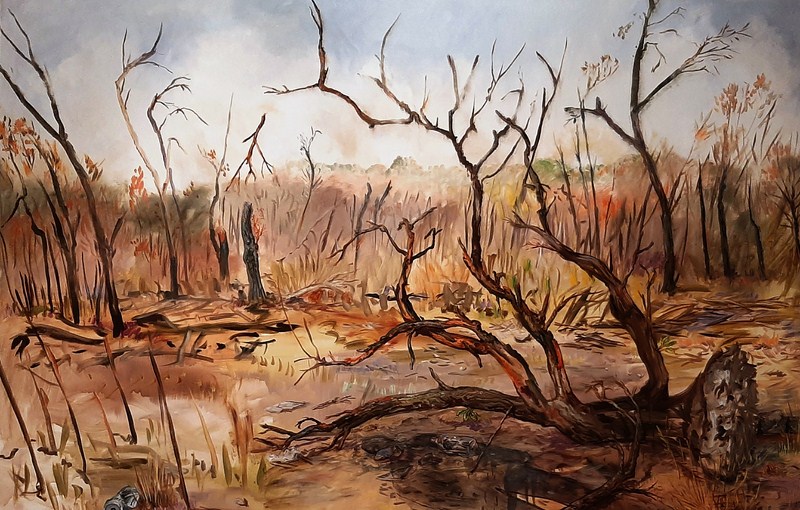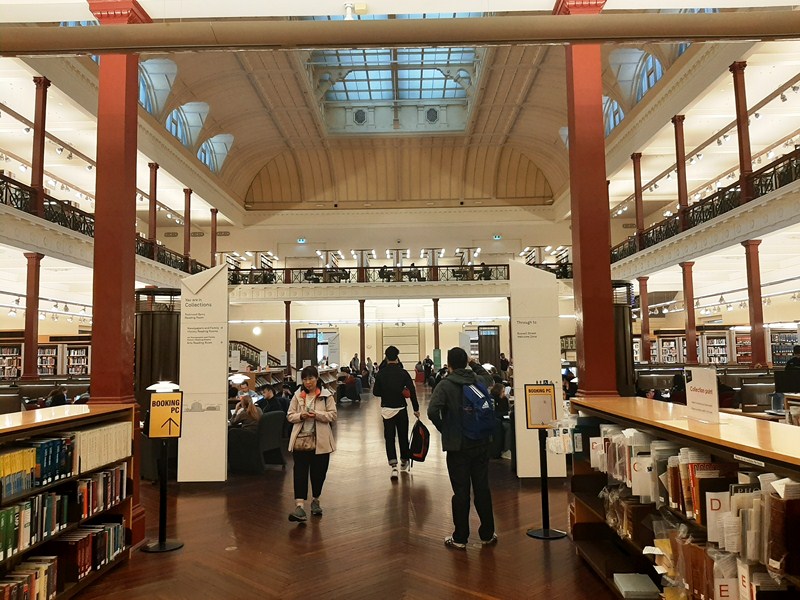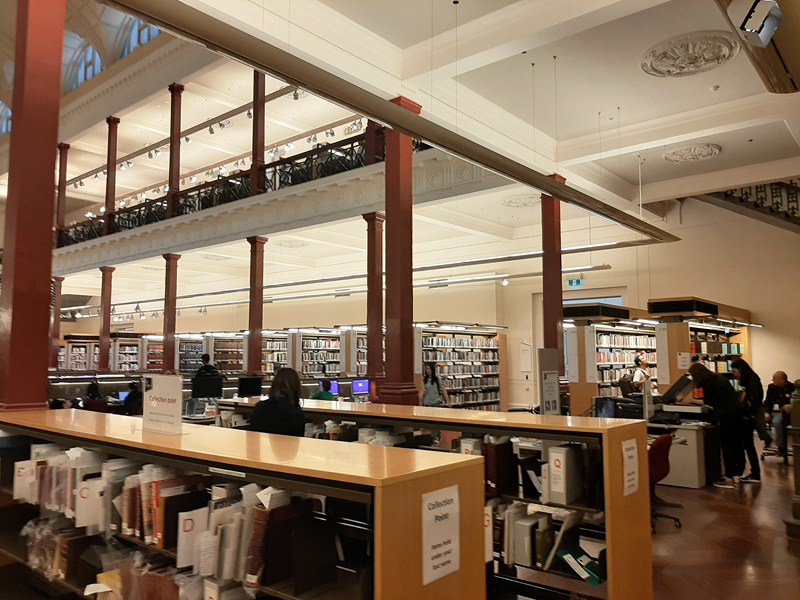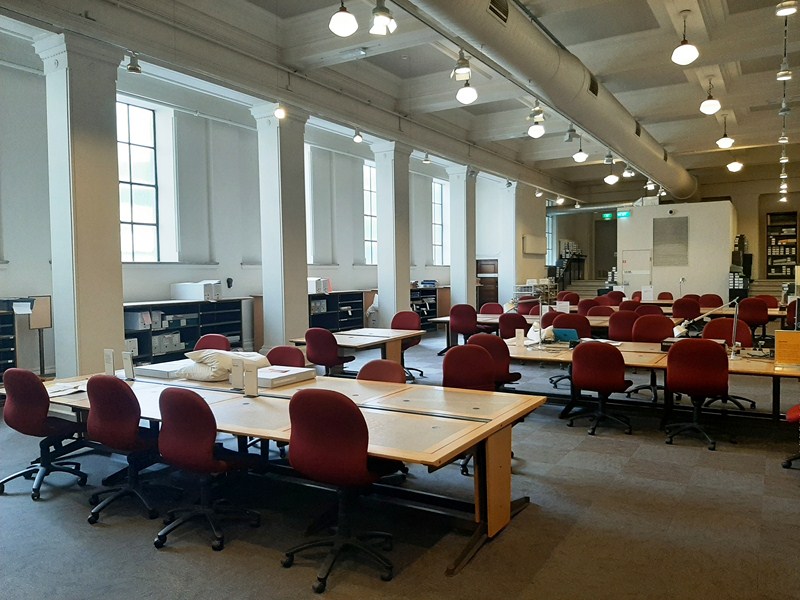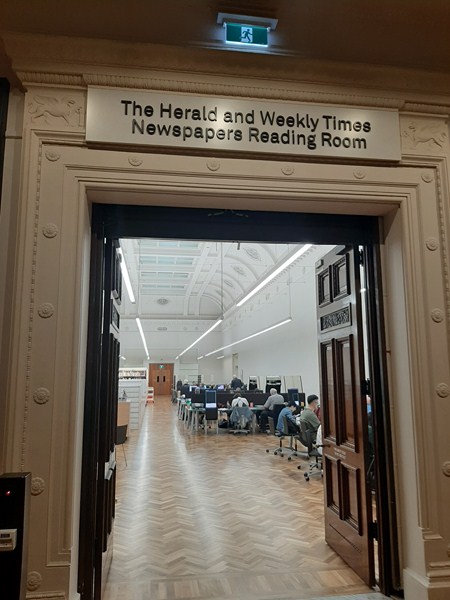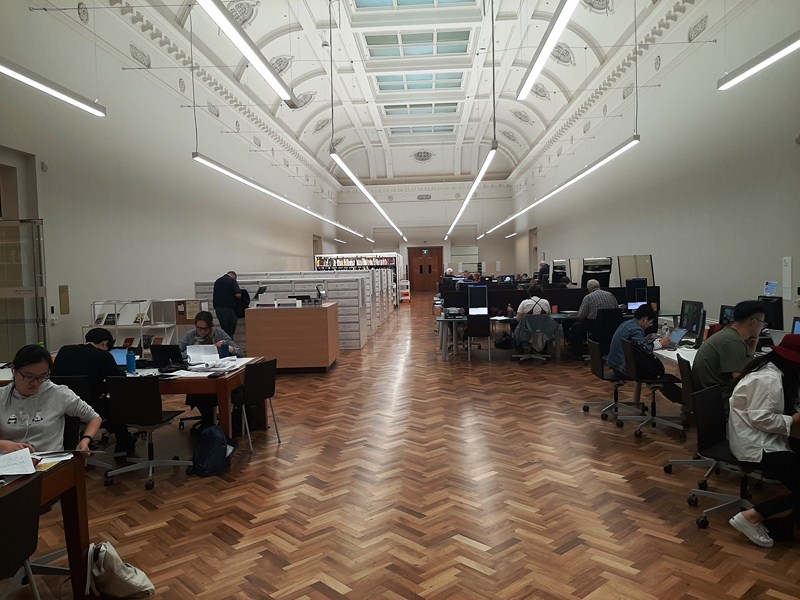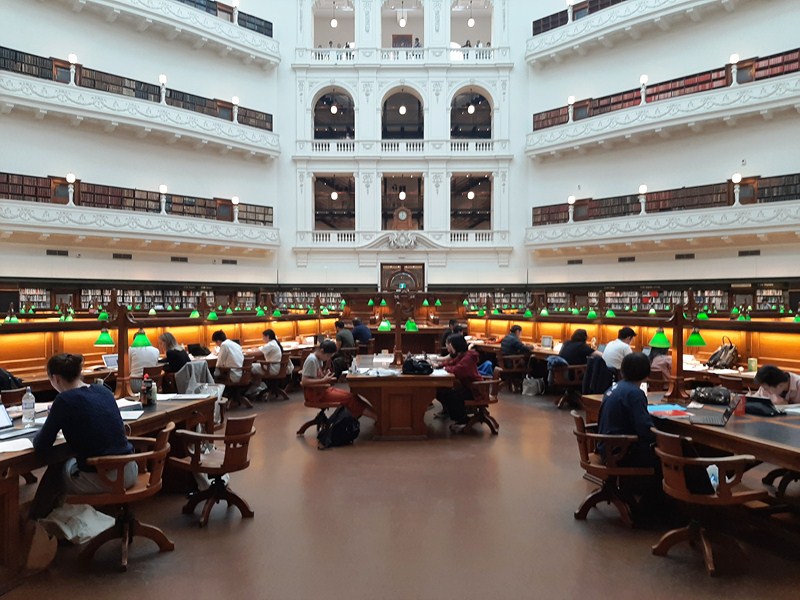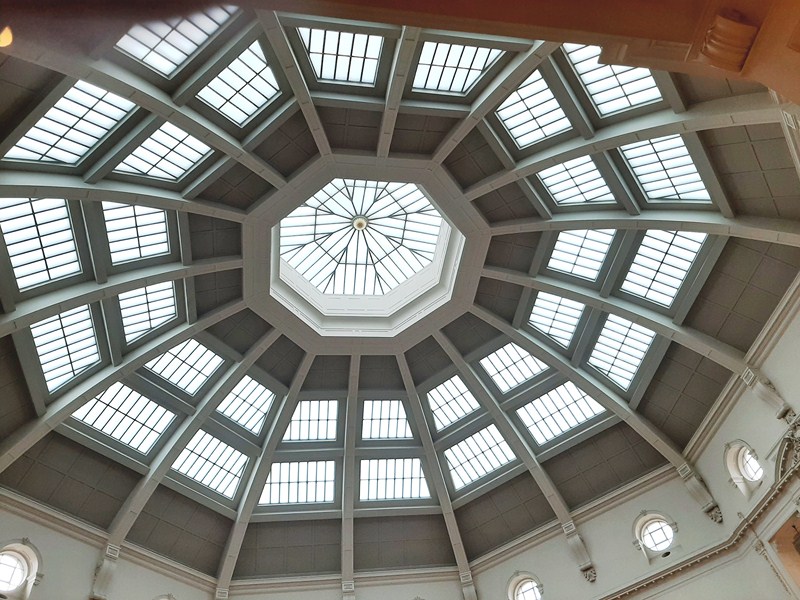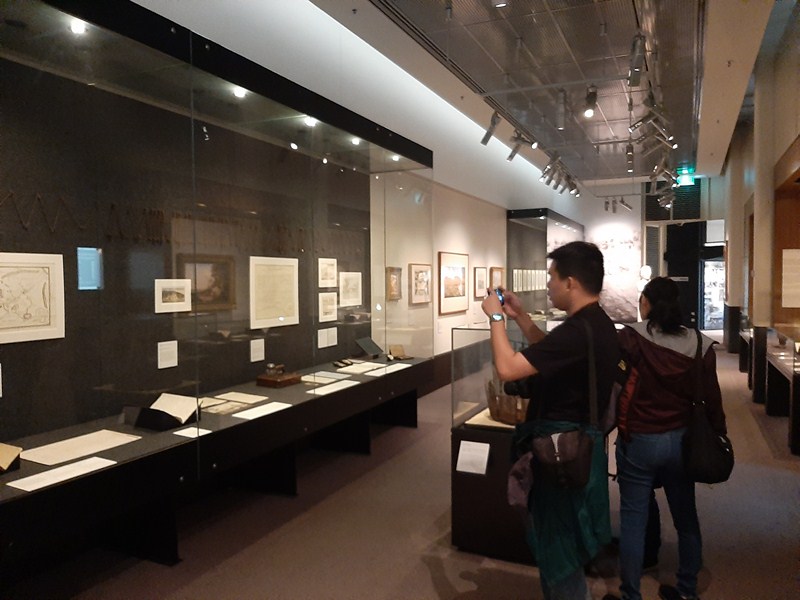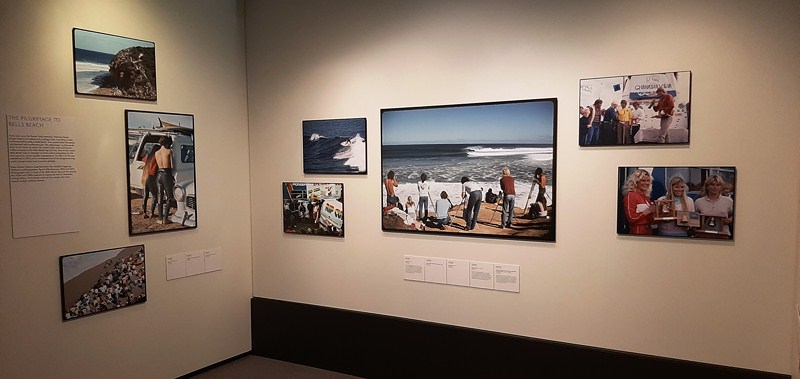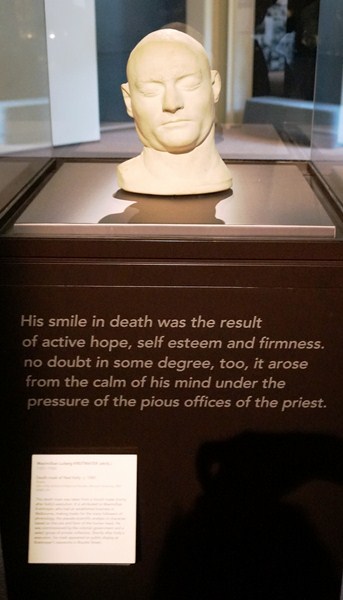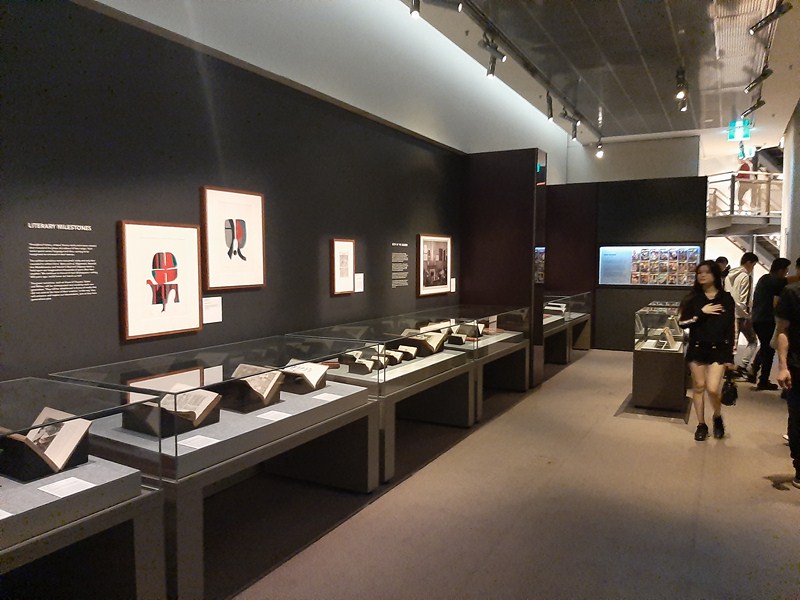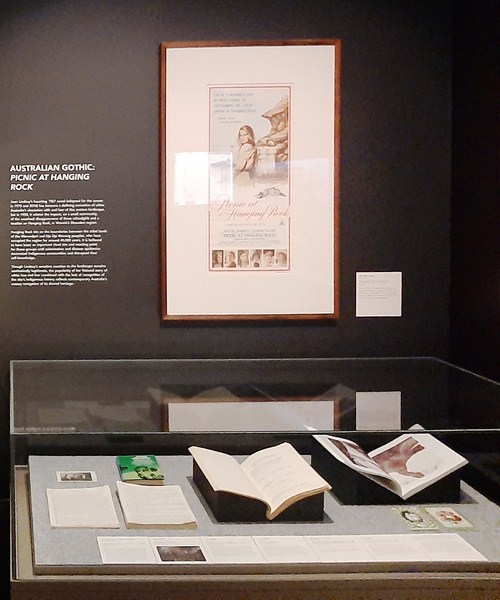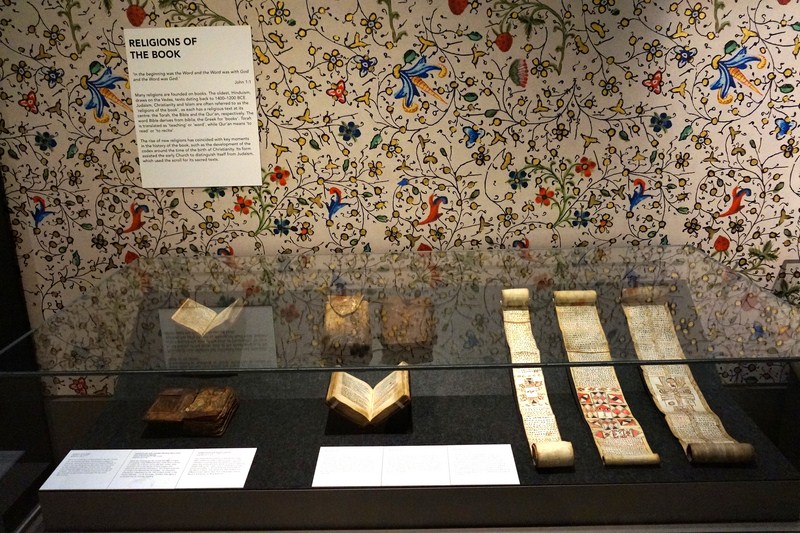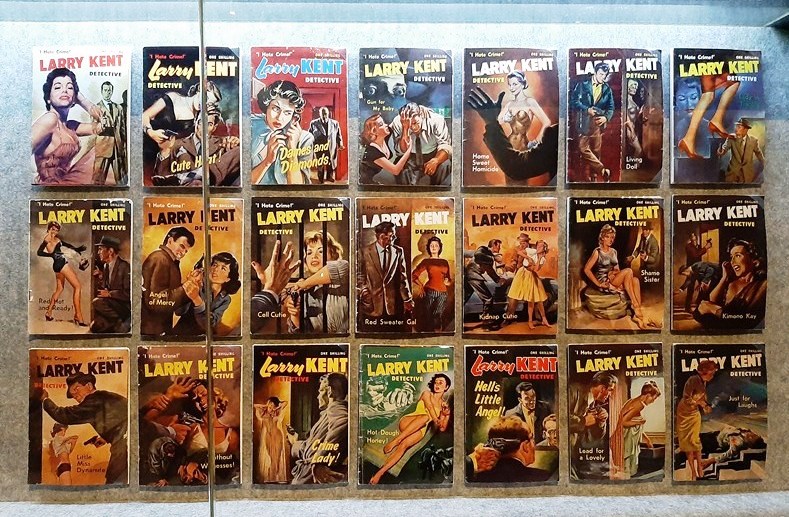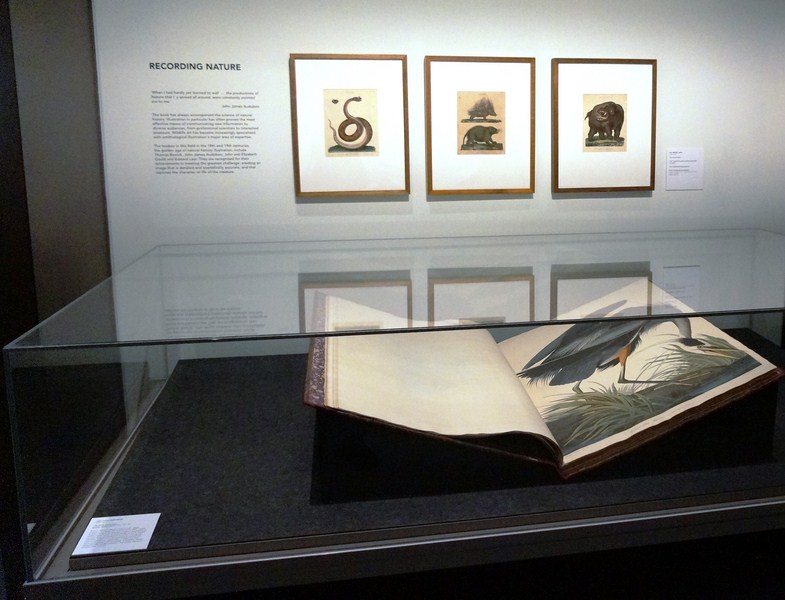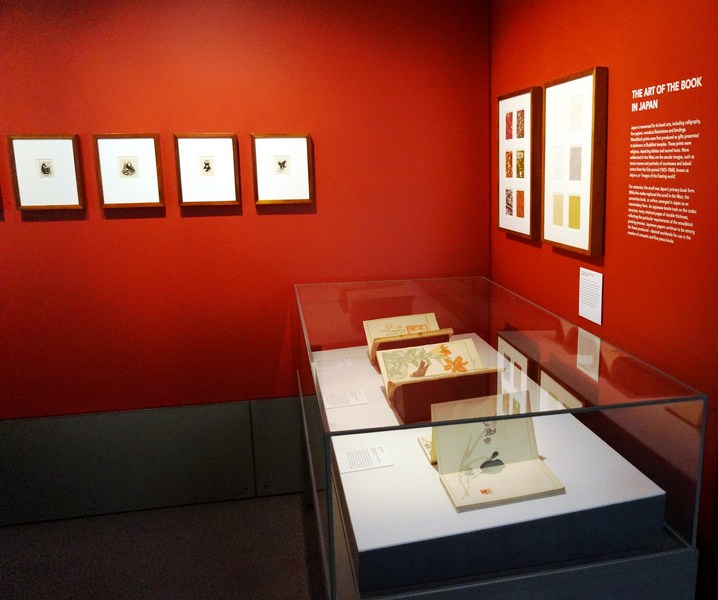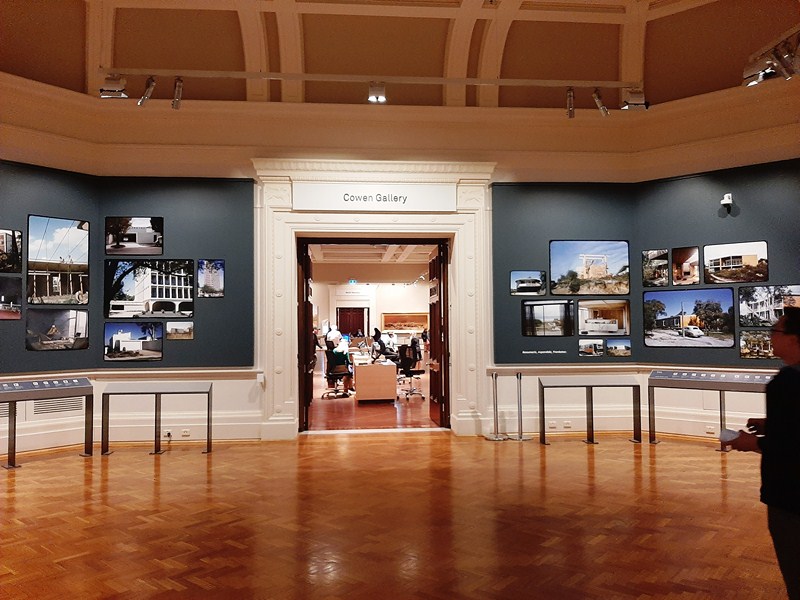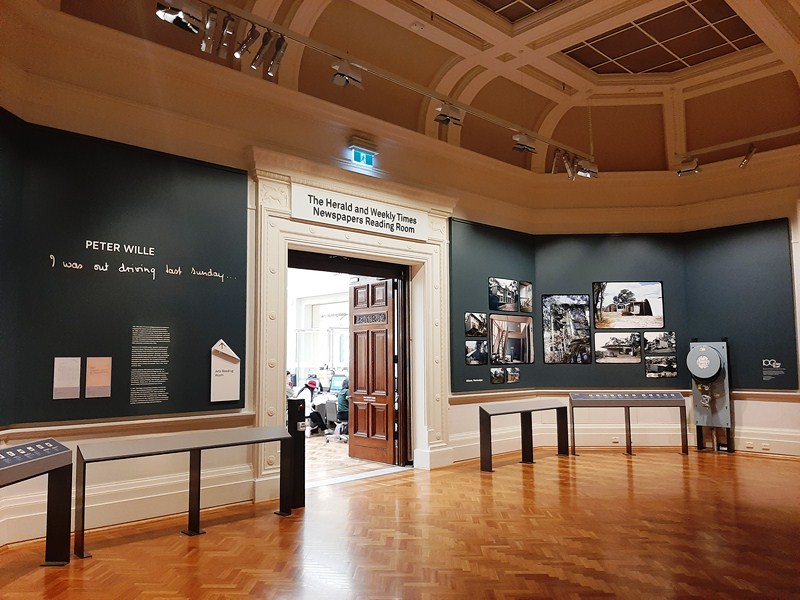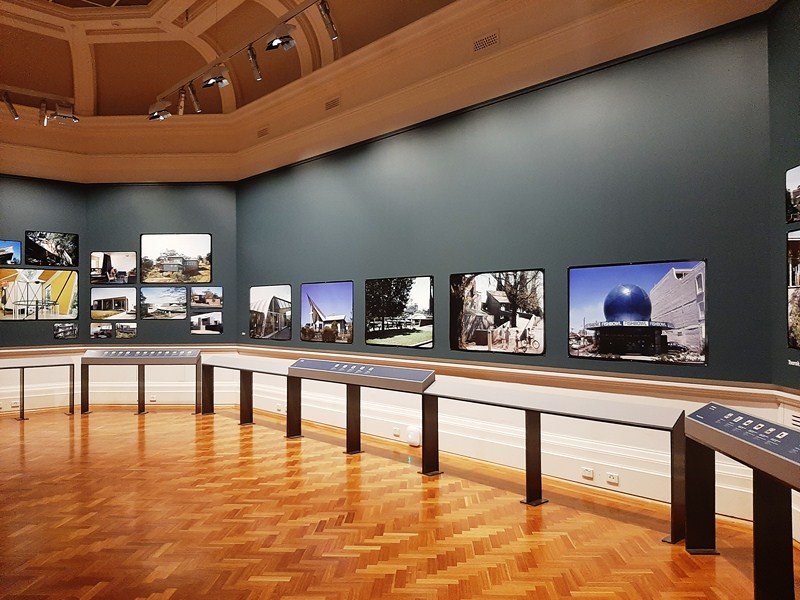On our fifth day in Melbourne, the first item in our city tour itinerary was the nearby State Library Victoria, the state‘s premier reference and research library, a gateway to the world’s information and a Melbourne landmark and cultural icon.
The library, located in the northern center of the central business district, comprises 23 individual buildings ((including the magnificent, 19th century building) and occupies an entire city block bounded by Swanston, La Trobe, Russell, and Little Lonsdale streets.
During our visit, the grassy lawn, in front of the library’s grand entrance along Swanston Street, was filled the city’s workers and students from the adjacent RMIT University. Originally, the lawn was enclosed by a picket fence and, in the 1870s, by a wrought iron fence and gates. In 1939, with the removal of the fence and the creation of diagonal paths, the space was opened up and is now a popular lunch-spot.
Here are some interesting trivia regarding this library:
- It is Australia’s oldest public library
- The Melbourne Public Library, as it was then known, was one of the first free libraries in the world,, open to anyone over 14 years of age, so long as they had clean hands.
- It also houses some of the original armor of Ned Kelly.
- As a result of the 1990 to 2004 redevelopment, the State Library Victoria can now be considered one of the largest exhibiting libraries in the world.
- On completion, the dome of the Domed Reading Room was the largest in the world.
- The library forecourt, a popular location for protest meetings and a rallying point for marches, is also the site of a speakers’ forum where orators, on Sundays, between 2:30 PM and 5:30 PM, take turns in speaking on various subjects.
- The exterior of the library is prominently featured at the conclusion of the post-World War III movie On the Beach.
The Library’s vast collection includes more than five million items, reflecting the culture of Victoria over the past 150 years. There are over two million books and more than a million photographs; journals and magazines; manuscripts; maps; hundreds of thousands of newspapers, with a special focus on material from Victoria, including the diaries of the city’s founders, John Batman and John Pascoe Fawkner, and the folios of Captain James Cook.
They also house audio, video and digital material. The complex of buildings that now houses the Library were built in numerous stages, housing various library spaces, art galleries and museum displays.
Many of the library’s electronic databases, including the full Encyclopædia Britannica; Oxford Reference dictionaries and encyclopedias; multi-subject magazine and journal article databases; newspaper archives of most major Australian and international papers from 2000 onwards; and specialist subject databases, are available from home to any Victorian registered as a State Library User.
The library’s collection includes 70,000 photographs in 2,000 rolls of film containing photographs of Melbourne and country Victoria from the early 1970s that are in the process of being digitized and made available to the public.
Here is the historical timeline of the library:
- In 1853, at the instigation of Lieutenant-Governor Charles La Trobe and Justice Redmond Barry, Q.C. (Sir Redmond from 1860), the decision to build a combined library, museum and gallery was made. A competition was held, won by the recently arrived architect Joseph Reed, whose firm and its successors went on to design most of the later extensions, as well as numerous 19th-century landmarks such as the Melbourne Town Hall, and the Royal Exhibition Building.
- On July 3, 1854, the recently inaugurated Governor Sir Charles Hotham laid the foundation stone of both the new library complex and the University of Melbourne.
- On February 11, 1856, the library’s first stage (the central part of the Swanston Street wing) was opened with a collection of 3,800 books chosen by Mr. Justice Barry, the President of Trustees.
- On May 1856, Augustus H. Tulk, the first librarian, was appointed.
- In 1860, Joseph Reed designed a grand complex for the whole block including a domed section facing Russell Street to house the Museum and Gallery.
- In 1859, the south part of the front wing, including the elaborate first floor Queen’s Reading Room (now Queen’s Hall), was opened.
- In 1864, the northern part, added by Abraham Linacre, was completed.
- In 1866, a number of halls, just behind the front wing and meant to be temporary, were built for the Intercolonial Exhibition of Australasia. They remained in use until 1909.
- In 1870, the classical portico was completed.
- In 1886, Barry Hall, along Little Lonsdale Street, was completed.
- In 1887, a memorial statue of Mr Justice Sir Redmond Barry, C., by James Gilbert and built by Percival Ball, was installed on the central landing of the main stairs.
- In 1889, the National Museum of Victoria moved to library site.
- In 1889, the statue of Saint George and the Dragon (flanking the entrance plaza), by the English sculptor Sir Joseph Edgar Boehm, was installed.
- In 1892,the McCoy Hall, now the Redmond Barry Reading Room, was completed
- In 1907, the statue of Jeanne d’Arc (Joan of Arc), a replica of the statue by French sculptor Emmanuel Frémiet, was installed.
- In 1909, work began on the library’s famed Domed Reading Room
- In 1909, the Baldwin Spencer Hall, facing Russell Street, was completed.
- In 1913, the Domed Reading Room was opened
- In 1932, the McAllan Gallery, along the LaTrobe Street side, was completed.
- In 1937, due to deterioration, a pair of bronze lions flanking the entry from the 1860s, were removed.
- In 1959, due to water leakage, the dome’s skylights were covered in copper sheets, creating the dim atmosphere that characterized the Library for decades.
- In 1968, the National Gallery of Victoria moved to its new purpose built home in St Kilda Road
- In 1971, the Lending Library closed.
- From 1990 to 2004, the library underwent an approximately A$200 million major refurbishment designed by architects Ancher Mortlock & Woolley. It included the creation of a number of exhibition spaces, some of which are used to house permanent exhibitions – “The Mirror of the World: Books and Ideas,” “The Changing Face of Victoria” and the “Pictures Collection” (Cowen Gallery).
- In 1992, the library finally filled the entire block
- In 1998, the World War I commemorative statues “Wipers” and “The Driver,” at the center points of the 1939 diagonal paths, were relocated to the ground of the Shrine of Remembrance.
- From 1999-2002, during renovations of its buildings, National Galley of Victoria returned to its original library home briefly, occupying the Russell Street halls.
- In 1999, the reading room closed to allow for renovation, when the skylights were reinstated.
- In 2003, the renamed La Trobe Reading Room was reopened.
- In February 2010, the southern wing of the library, along Little Lonsdale Street, was reopened as the Wheeler Centre, part of Melbourne’s city of literature
- In 2006, a statue of Charles La Trobe, by Australian sculptor Peter Corlett, was installed in the north east corner of the lawn.
- In 2015, better meet the changing needs of the community, the Library embarked on a five-year, $88.1 million redevelopment project (Vision 2020), designed by Danish architectural firm Schmidt Hammer Lassen Architects and Australian architecture and design studio Architectus, to transform its public spaces, programs and facilities.
- On April 29, 2015, Martin Foley (Minister for Creative Industries) announced that the 2015–16 State Budget would provide $55.4 million towards the redevelopment of State Library Victoria, including the restoration of the Queen’s Hall, the creation of a rooftop garden terrace, a dedicated children’s and youth space, and the opening up 40% more of the building to the public.
- In late 2017, the library’s contribution of $27 million from donations was eventually raised.
- In September 2018, the main Swanston Street entrance was temporarily closed and replaced by the newly refurbished Russell Street and La Trobe Street entrances.
Check out “Shrine of Remembrance” and “Royal Exhibition Building“
Upon entry, the first area we visited was the newly refurbished Victoria Gallery. The interactive Velvet, Iron, Ashes exhibition, opened on October 24, 2019, was ongoing (until July 12, 2020).
Its showcases more than 200 items from the Library’s own collection plus additions from other major institutions and private collections. The exhibition was open to all ages and free to attend.
Here, we learned some illustrious stories about Ned Kelly, the Ashes Urn (exclusively loaned from Marylebone Cricket Club in London and displayed from November 2019 until February 2020), Yallourn Power Station and even Nappie Wash, how fairy floss is linked to fancy dress, how the Freddo the Frog is tied to one of the greatest air races in history, and what the Ashes Urn and Ned Kelly’s armor have in common.
A retro-style Map-o-Matic device, which allows visitors to print out a map, opened up a world of storytelling to a new generation of Victorians.
At the North Rotunda are exhibits (September 2, 2019-September 2, 2020) of a selection of the Library’s 21st-century paintings, by living Australian artists, of Melbourne cityscapes.
Across the city, Rick Amor’s work, shows distant views of the city from remote hills, the Yarra River and docklands, and across rooftops. Abstracted views of urban sites and landmarks, which provoke reflection on our interaction with the built environment, are presented by Tony Lloyd’s Skystone, William Mackinnon’s Exit and Louise Forthun’s Toffee and Ice.
There are also depictions of Melbourne’s hallowed sporting grounds – Josie Kunoth Petyarre’s view of the iconic Melbourne Cricket Ground, the home of Australian Rules Football, Shane Jones’s Flemington Racecourse (showing the birthplace of the internationally renowned Melbourne Cup horse race), etc..
The Cowen Gallery, refreshed In 2018, features a permanent display of more than 40 works of art from the State Library’s 2003–18 Cowen Gallery exhibition, which included colonial and modern portraits, paintings of Victorian landscapes, iconic Melbourne landmarks and artists’ impressions of events from Victoria’s history.
The rehung exhibition includes a greater representation of 20th-century artists such as Eric Thake, Arthur Boyd, Fred Williams and Juan Davila. The northern end of the room is framed by William Strutt’s Black Thursday February 6th, 1851 (1864) and Juan Davila’s Churchill National Park (2009) while the southern end of the room features Reinhold Hofmann’s Melbourne 1836 (c. 1886) and Jan Senbergs’ Melbourne 1998-99 which explores the city and urbanization.
The adjacent Blue and Red Rotundas house portraits and busts of Victorians.
The Redmond Barry Reading Room, at the eastern end of the Library, is easily the busiest room during pre-exam period in Victoria. It houses a contemporary collection of books, magazines, and periodicals. The center of the room has internet-enabled computers and shared desks while the mezzanine has folio-size books and more independent study desks. The ceiling has glass panels.
The Heritage Collections Reading Room (HCRR), though it does not hold any collections (save for map bags consisting of copies of maps of Metropolitan Melbourne, between the 1800s to 1900s), is a place to view heritage collection materials. Entry here is by appointment (however, no appointment is required to see the maps). It has 14 historical pendant lamps hanging off the ceiling plus a detailed ceramic embossed wall and ceiling.
The Arts Collection Reading Room, built in a courtyard (hence the angular shape of the room), maintains an extensive, world-class collection of books, periodicals, recordings and other materials pertaining to art, music and the performing arts. The main room, housing computer workstations (which provide access to the Library’s catalog, databases and the web), reading tables, laser printer, photocopier and a microfiche reader, also has an audio visual room and listening posts.
The Genealogy Reading Room, located in one of the courtyards, has an extensive collection of microfilms and microfiche, printed references, databases, and biographies. There are many facilities available such as computers and a laser printer.
The Newspaper Reading Room, located in one of the courtyards, keeps three months’ worth of physical copies of Victorian newspapers; holds microfilm of Victorian, interstate, and some international newspapers; and has modern microfilm and scanner readers (enabling patrons to save images of newspapers to USB memory stick) and facilities to help with research.
Our visit to the library was highlighted by the landmark La Trobe Reading Room (formerly the Domed Reading Room). Designed by Norman G. Peebles of Bates Smart, it houses the Library’s Australiana collection, previously in the 1965 La Trobe Building annex.
Its octagonal space, designed to hold over a million books and up to 600 readers, is 34.75 m. in both diameter and height, and its oculus is nearly 5 m. wide. The balconies overlooking the beautiful La Trobe Reading Room have now been transformed into exhibition areas.
At the Changing Face of Victoria, in the Dome Galleries, Level 5, we explored the state’s history, discovering the people, places and events that have shaped Victoria.
Here, we encountered explorers, gain insights into life on the goldfields, and explore life in Victoria in the 20th and 21st centuries from Bells Beach to Black Saturday. Twice yearly, new items and stories are added to this exhibition, revealing different aspects of the Library’s historic collection.
Just one level below is the World of the Book, Australia’s largest exhibition dedicated to books that celebrates the unique place books have in our hearts and minds. This one-of-a-kind exhibition showcased the history of book design, production and illustration, from the Middle Ages to today.
Here, we saw rare medieval manuscripts and sacred texts, magnificent natural history and botanical illustration, stunning modern artist books and fine press editions, as well as pioneering Australian classics, children’s books, graphic novels and comics.
The Books and Ideas section exhibits medieval manuscripts and early printed books; sacred texts from around the world and from different religious traditions;, key works of astronomy, and a special display exploring the historical “restricted books” section of the State Library Victoria.
The Books and imagination section displays famous works from the literary canon, including the Second Folio of William Shakespeare’s plays (1632); modernist masterpieces by Virginia Woolf, countercultural classics from the New Journalism group of American writers; the writings of Australian author Gerald Murnane, and 1960s Western pulp fiction.
The Exploring the World section features atlases, maps and travel journals from European voyages of discovery, from the 16th century onwards, with a special focus on mythical animals and costumes of the world; and richly illustrated works of natural history, including a special display called “The Mystery of the Missing Beetles,” a detective story uniting the collections of this library and Museums Victoria.
The Art and Nature section displays botanical art and landscape design from the 16th century to today, with a special focus on the work of female Australian botanical artists.
The Artist and Books section includes fine bindings from the John Emmerson Collection, Japanese woodblock printed books about textiles, glamorous Art Deco graphic design, contemporary Australian photo books, and archival material from the Wayzgoose Press Archive, an Australian fine press.
The South Rotunda (formerly Blue Rotunda), built in 1928, is an intimate gallery space that was formerly part of the McArthur Gallery (now the Newspapers and Family History Reading Rooms), linking to the Cowen Gallery. It hosts small exhibitions and provides access to both the Heritage Collections Reading Room and the Newspapers and Family History Reading Rooms.
The current exhibition during our visit was Peter Wille: Out Driving, a photographic survey of Melbourne’s modernist architecture from the 1950s and ’60s. Wille amassed a collection of more than 6,000 color photographs of Melbourne’s architectural wonders throughout the 1950s and 1960s.
The exhibition includes works by groundbreaking architects Robin Boyd, Peter McIntyre, Kevin Borland, and John and Phillis Murphy. The exhibit runs from December 1, 2018 – April 30, 2020.
State Library Victoria: 328 Swanton St., Melbourne, Victoria 3000, Australia. Tel: 8664 7000. E-mail: inquiries@slv.vic.gov.au. Website: www.slv.vic.gov.au. Open Mondays to Thursdays, 10 AM – 9 PM, and Fridays to Sundays, 10 AM – 6 PM. Closed Good Friday, Christmas Day, Boxing Day and New Year’s Day.

